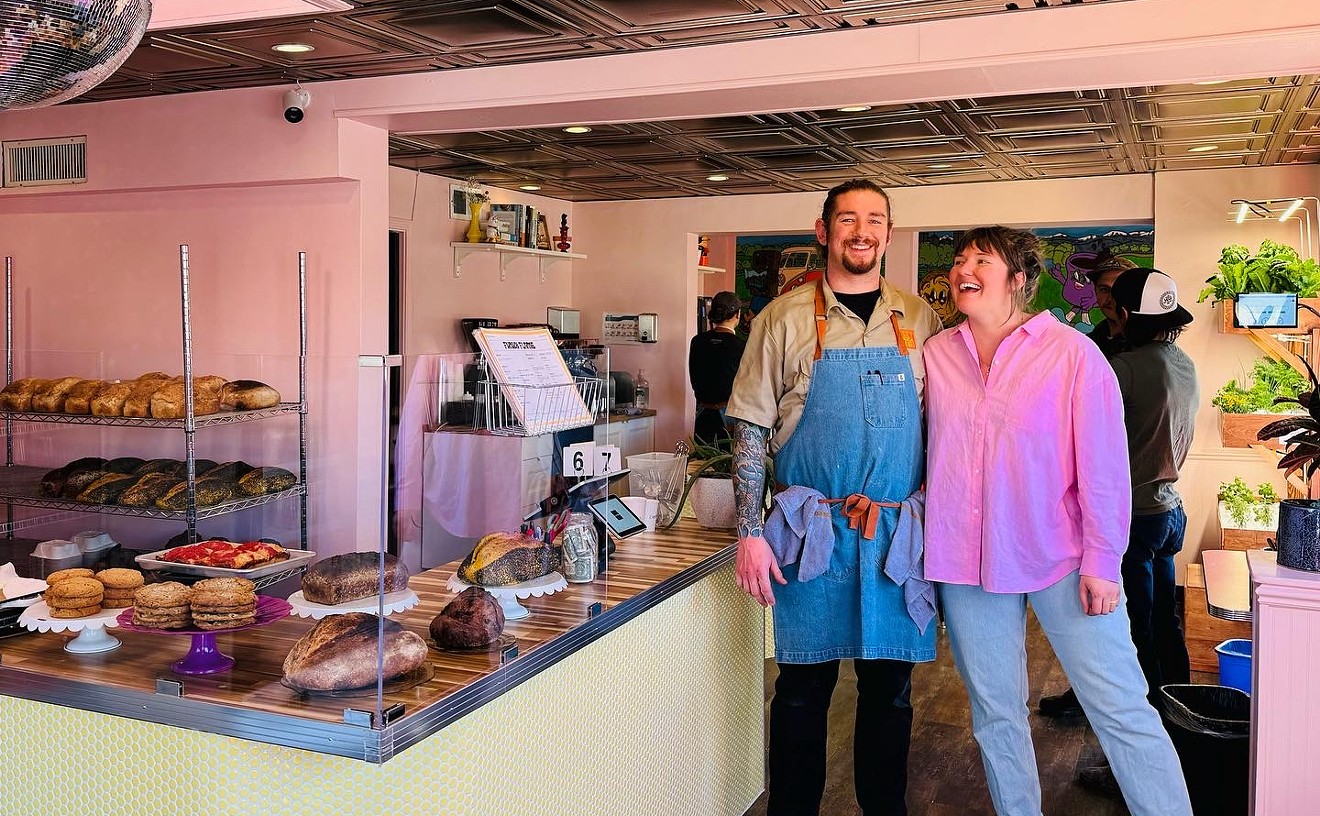The Ethniche column began in May 2014 as a deep dive into the city’s international culinary scene, with each month devoted to four or five restaurants serving the cuisine of a specific country, region or culture. After a year, though, I changed tactics, looking instead for less common foods, whether traditional dishes from little-represented countries like Sudan (you can find unique egg and bean dishes at Aurora’s Sudan Cafe) or dishes from well-known countries that are rare here (like the champurrado I found at Tarasco’s New Latino Cuisine); I also compared different versions of dishes at several similar restaurants (an exploration of Sichuan peppercorns at three Chinese restaurants gave me an appreciation for numbing heat).
As 2015 came to a close, I realized that although I’d eaten my way through Hawaiian Spam rolls, Korean fried chicken, Jamaican oxtail and Southern barbecue in its many permutations, there is still plenty that Denver and its suburbs have to offer that I haven’t even touched — and plenty more coming our way on the culinary horizon.
I’m not a fan of New Year’s resolutions (the pile of unread books at my bedside and receipts for unused gym memberships will serve as evidence), but when it comes to food, I generally find a way to follow through on promises, inspiration and self-motivation. Many Americans have just committed to new diet and exercise regiments that they may or may not uphold, but I’m going in the opposite direction: I vow to eat more than ever in 2016 — not more calories, but with more variety, and from a greater variety of sources.
There are still vast regions of the planet where people whose culinary traditions are virtually unknown to me live, work and eat. Food is one of the most basic and honest expressions of culture, and through it, strangers become friends and friends become family. So here are three of my top goals for the year.
1) Exploring the Food of Africa
Denver and Aurora support a growing Ethiopian population, with more than a dozen restaurants and smaller cafes that serve injera bread, spicy stews and flavor-packed vegetarian offerings for immigrants and their Colorado-born families; several markets stock exotic (to mainstream eaters, anyway) ingredients and other products. But Ethiopia is only one country on a continent more diverse in climate and culture than anywhere else in the world, and my knowledge of how the food of the rest of Africa manifests itself in Colorado is slim. Places like the African Grill and Bar, which specializes in the food of Ghana but also offers dishes from other regions, will be on my list in 2016, as will other African eateries in Aurora.
Last year I sampled South African street food from Jozi’s Kitchen & Shebeen at the Big Wonderful; I hope that it returns in 2016 — either as a brick-and-mortar restaurant or as another weekend destination when the Big Wonderful reopens in the spring.
2) Looking at National Trends in International Cuisine
Trends in major markets on the East and West coasts can often determine what hits Denver next — and what to watch for. Several years ago, Vietnamese/Cajun eateries popped up in Louisiana and then spread to other Gulf Coast states and Atlanta before eventually becoming popular in Los Angeles. Before long, Denver got its share; today the Asian Cajun, Vietnam Bay and the Crawling Crab still serve up boiled-in-the-shell crawdads, crabs and shrimp doused in mash-up sauces that land somewhere between Old Bay and nuoc cham.
A large Korean population in Los Angeles has fueled a vibrant restaurant scene there for decades, to the point that Korean and Mexican cuisines have fused into something completely new in food trucks and restaurants, with Roy Choi’s Kogi at the center. In Aurora, new Korean barbecue spots seem to pop up nearly every week, and Seoul-style pubs, like Funny Plus on South Parker Road, could be a trend in 2016, with spicy, crackling fried chicken as the main draw. And a third Dae Gee Korean BBQ will open soon on Broadway, bringing bulgogi, kalbi and banchan to a broader audience.
What’s next for Denver? A look to Boston reveals that one of its big-name restaurateurs recently opened an eatery called Playska, which specializes in Balkan food, specifically a ground-meat sandwich called a pljeskavica. This trend toward specialty food popping up from unlikely sources seems to have already started in Denver: Cute breakfast bar Onefold offers Chinese-inspired savory congee; downtown’s upscale Chinese kitchen, Uncle Joe’s Hong Kong Bistro, features coiled “rice pillow” noodles in a dinner entree (something I’ve otherwise encountered only in the most traditional dim sum parlors); and even the most American of bar-and-grill concepts like the Hornet are challenging guests to try such foreign dishes as Mexican cemita sandwiches and Salvadoran pupusas. In Ethniche, I’ll keep you posted on traditional and newfangled versions of regional specialties wherever they may pop up.
3) Visiting Ethnic Markets
Almost by accident, I found out that many Mexican grocery stores, carnicerias and neighborhood markets in town also house taquerias that rival the more popular stand-alone spots. And even if the same isn’t true of the food markets of other cultures, those stores are still a great place to find new ingredients (like Mexican sweet limes or Ethiopian berbere spice mix) and learn about what people are cooking and eating in their homes — which is often completely different than restaurant food.
In those Mexican markets, I’ve come across fresh longaniza sausage and carne seca (thin-sliced dried beef similar to beef jerky), which are nearly impossible to find on restaurant menus. And the variety and quality of produce (stuff you’re unlikely to discover even in the most well-stocked Whole Foods) and dried chiles means that following those intricate recipes from Patricia Quintana, Diana Kennedy or Rick Bayless is just a matter of planning a trip to the right store.
But there are also Eastern European, Ethiopian, Indian, Vietnamese, Japanese and Middle Eastern markets, each filled with a world of meats, produce, sauces and imported dry goods. Larger stores often stock kitchen equipment specific to certain styles of cooking, too, like the large clay mortars and pestles needed to make the best Thai green-papaya salad. If you’re cooking at home or just wondering about the source of an ingredient you saw on a menu, I’ll be visiting these spots more in 2016.
[
{
"name": "Air - MediumRectangle - Inline Content - Mobile Display Size",
"component": "12017618",
"insertPoint": "2",
"requiredCountToDisplay": "2"
},{
"name": "Editor Picks",
"component": "17242653",
"insertPoint": "4",
"requiredCountToDisplay": "1"
},{
"name": "Inline Links",
"component": "18838239",
"insertPoint": "8th",
"startingPoint": 8,
"requiredCountToDisplay": "7",
"maxInsertions": 25
},{
"name": "Air - MediumRectangle - Combo - Inline Content",
"component": "17261320",
"insertPoint": "8th",
"startingPoint": 8,
"requiredCountToDisplay": "7",
"maxInsertions": 25
},{
"name": "Inline Links",
"component": "18838239",
"insertPoint": "8th",
"startingPoint": 12,
"requiredCountToDisplay": "11",
"maxInsertions": 25
},{
"name": "Air - Leaderboard Tower - Combo - Inline Content",
"component": "17261321",
"insertPoint": "8th",
"startingPoint": 12,
"requiredCountToDisplay": "11",
"maxInsertions": 25
}
]











